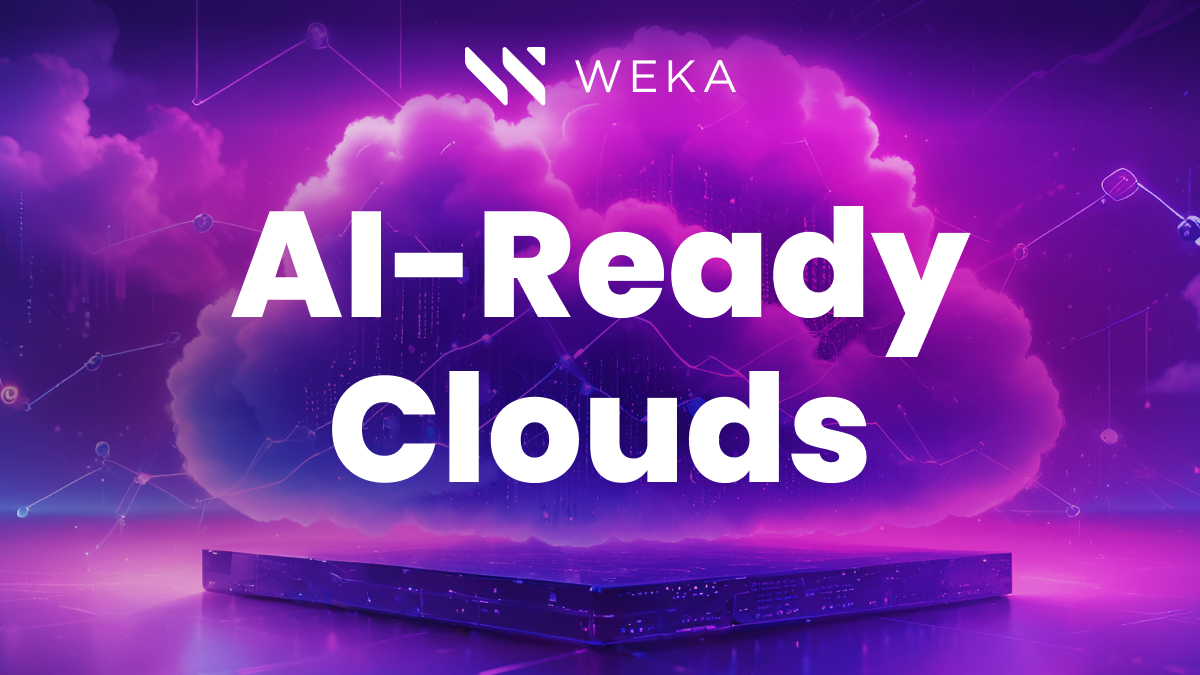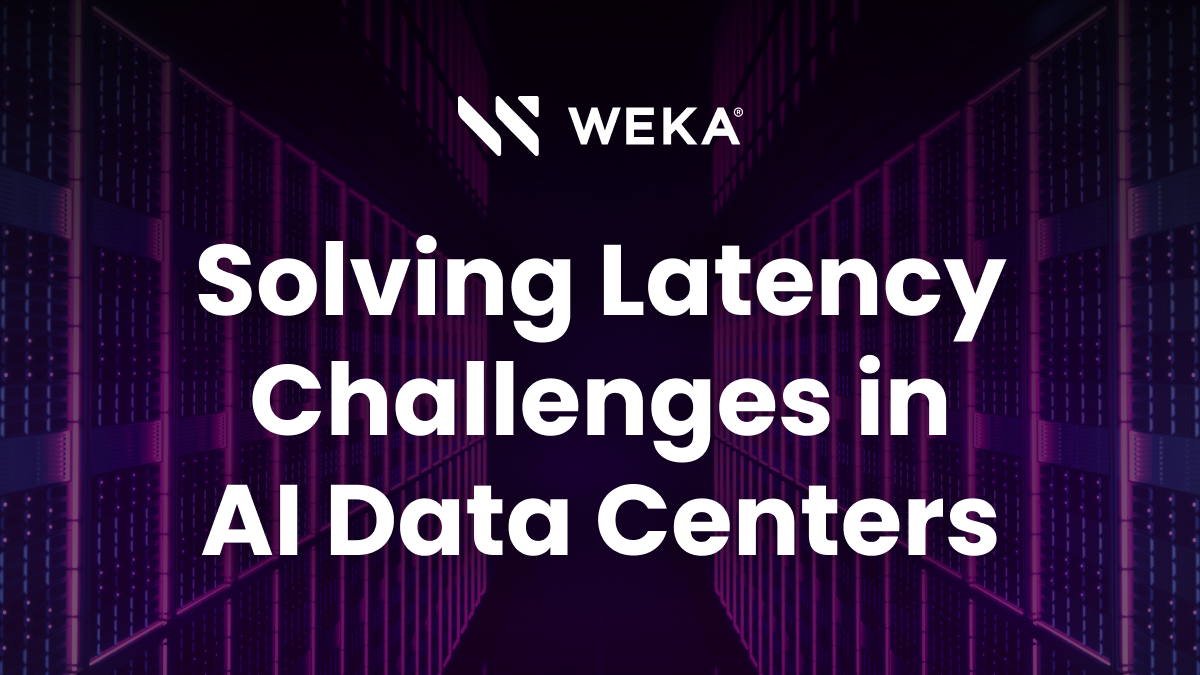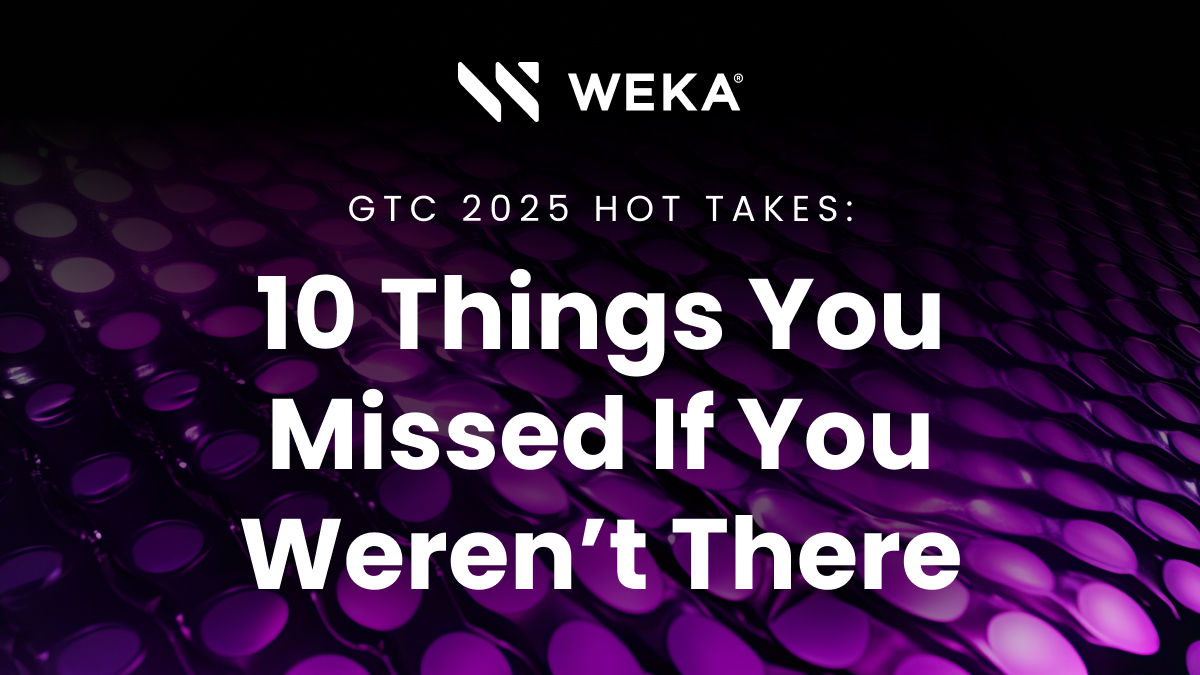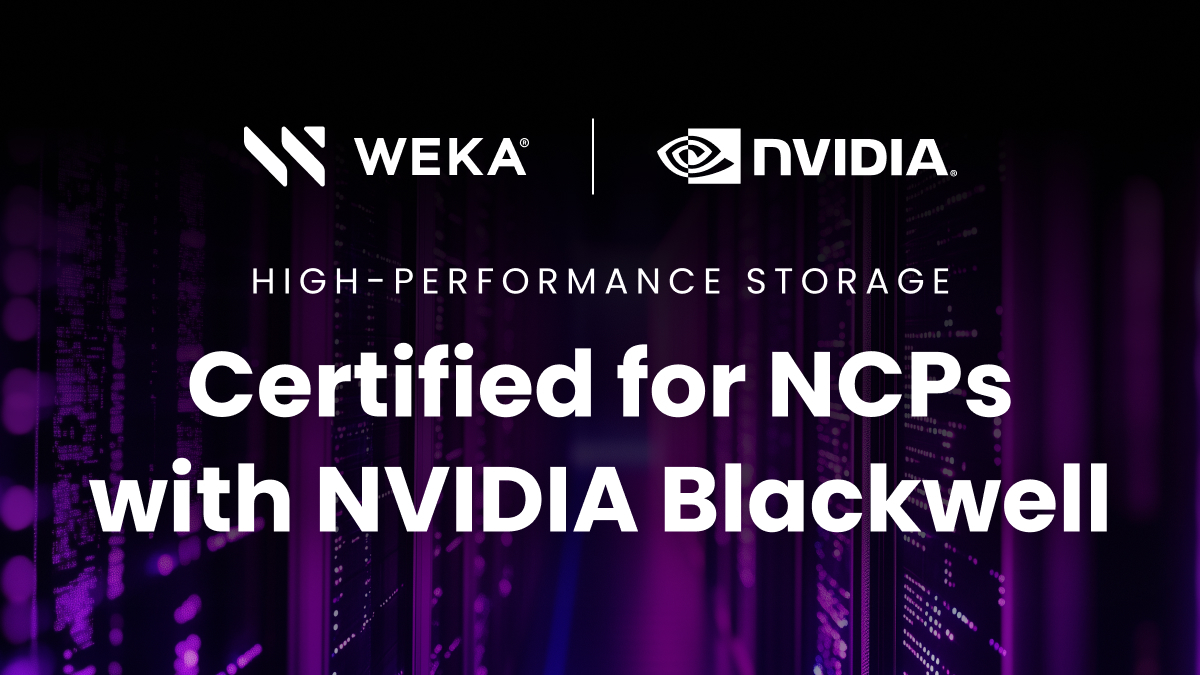Fit for Purpose: Part 3 – Cloud Service Providers

We’ve been talking a lot about being “fit for purpose.” How a system is specifically designed to meet the exact needs of a task ensures maximum efficiency and effectiveness. In contrast, adapting an older solution often requires retrofitting, which can introduce inefficiencies, reduce functionality, and increase complexity, as the original design wasn’t intended to handle modern requirements. For AI, being fit for purpose ensures that the system can handle the unique demands of AI workloads, such as large-scale data processing and real-time analytics, without bottlenecks or performance degradation. To coincide with our new NVIDIA Cloud Partner Reference Architecture certification, let’s turn to look at how being fit for purpose applies to data infrastructure being deployed by cloud service providers and in particular how it can lower power consumption by up to 10x.
AI Revolution: Automated Factories and Scalable Cloud Infrastructure
The AI revolution, much like the Industrial Revolution, is transforming industries, economies, and societies by automating cognitive tasks and enabling machines to perform complex decision-making and problem-solving at scale. This shift is driving innovation, reshaping job markets, and significantly boosting productivity across various sectors, with the potential to revolutionize everything from healthcare to finance.
Just like the Industrial Revolution represented a shift from artisanal to automated production, the same is happening with AI. We are seeing the rise of large-scale, automated systems designed to produce and refine AI models continuously. These “AI factories” are central to this transformation, consolidating traditional high-performance computing projects into unified infrastructures that streamline the creation, deployment, and scaling of AI applications, further accelerating industrial progress.
Cloud service providers (CSPs) are essential in supporting AI factories by delivering scalable, flexible infrastructure that meets the extensive computational demands of AI operations. They are rapidly constructing some of the largest AI factories in the world.
These providers offer cloud-based platforms that integrate advanced machine learning tools, data storage solutions, and MLOps frameworks, enabling them and their customers to streamline the entire AI lifecycle. As AI architectures evolve towards more flexible, containerized environments using Kubernetes and operators like RunAI, cloud platforms consolidate training, RAG, and inference processes into a unified infrastructure, necessitating fit-for-purpose storage solutions to manage the increased load effectively.
WEKA Empowers CSPs to Lead the AI Revolution
The shift to industrialized manufacturing required key tools like the steam engine, spinning jenny, power loom, and cotton gin, which enabled mass production and increased efficiency, transforming manufacturing from artisanal to large-scale factory operations. These innovations fueled the growth of industries and set the stage for modern industrial manufacturing. And the same is true for AI factories. CSPs need fit-for-purpose tools to effectively support the AI revolution by building scalable, efficient, and flexible infrastructures. These tools are superior to legacy “artisanal” tools because they are specifically tailored to meet the demands of modern AI workloads. They provide better performance, scalability, integration, and resource efficiency, all of which are crucial for CSPs looking to lead in the rapidly evolving AI-driven world.
To deliver scalable compute and GPU resources, CSPs require storage systems that perform optimally without fine-tuning, ensuring high performance across diverse workloads like AI, ML, and HPC. Additionally, providers must offer flexible infrastructure that supports multiple workload types while maximizing efficiency and cost-effectiveness. As power constraints become a growing issue, optimizing performance per kilowatt-hour is crucial for maintaining competitiveness and sustainability in high-density, power-intensive data centers.
WEKA plays a crucial role in this ecosystem due to its cloud-native design, which seamlessly integrates with major cloud platforms like AWS, Azure, GCP, and OCI. WEKA’s “snap to object” feature allows for easy snapshotting and replication of massive file systems to cloud object stores, facilitating disaster recovery, compliance, and additional AI operations where GPUs are accessible. This capability enables seamless data movement between on-premises infrastructures and cloud architectures, providing flexibility and efficiency for AI-driven enterprises.
WEKA helps Cloud Service Providers like AmpZ, Applied Digital, Denvr Data, IREN, NextGen Cloud, Sustainable Metal Cloud, TensorWave, and Yotta by offering a high-performance, scalable, and energy-efficient data platform tailored for AI and HPC workloads. By optimizing GPU usage, reducing energy consumption, and providing a compact infrastructure, WEKA enables these providers to deliver powerful, cost-effective, and sustainable services. Additionally, its flexible, future-proof architecture supports diverse workloads and seamless data management, helping CSPs stay competitive and aligned with evolving AI demands.
WEKA, Now Certified for NVIDIA Cloud Partners
Today, WEKA proudly announced that its AI-native data platform has been certified as a high-performance data store solution for NVIDIA Cloud Partners. With this certification, NVIDIA Cloud Partners in the NVIDIA Partner Network can leverage a systems design that includes WEKA’s exceptional performance and scalability in AI workloads. The certification includes WEKA’s integration with NVIDIA HGX H100 systems, delivering up to 48GBps read and 46GBps write throughput, supporting over 32,000 GPUs in a single cluster. This partnership enhances GPU utilization, reduces infrastructure costs, and supports sustainable AI practices, making WEKA an ideal choice for large-scale AI deployments in the cloud.
Unmatched Performance and Scalability: The WEKA solution has demonstrated its ability to deliver 48 GB/s read throughput and over 46 GB/s write throughput on a single HGX H100 system. Competing solutions can only achieve similar performance with 2 to 10 times more infrastructure, making WEKA the more efficient and cost-effective option.
Compact and Efficient Footprint: WEKA’s high throughput and low latency come in a compact, efficient footprint, reducing costs by minimizing the need for physical space, cooling, and power consumption. This not only leads to significant savings in operational expenses but also contributes to a lower environmental impact, setting WEKA apart from less efficient alternatives.
Comprehensive Data Lifecycle Support: The WEKA Data Platform supports every step of the data lifecycle—from ingest and pre-processing to analysis, storage, and archiving—ensuring optimized performance and efficiency. Its zero-tuning capabilities streamline AI pipelines, reduce complexity, and enhance overall system efficiency, unlike other solutions that require extensive tuning and management.
Validated for Large-Scale Deployments: With flexible configurations supporting over 32K GPUs in a single cluster, NVIDIA Cloud Partners can confidently pair WEKA data solutions with large-scale AI infrastructure deployments. This makes it an excellent choice for cloud service providers looking to accelerate data pipelines for their customers, whereas other solutions struggle to scale as effectively.
WEKA Optimizes Power Efficiency and GPU Utilization for CSPs, Reducing Costs While Maximizing AI Performance
As mentioned, power is vital for CSPs not only because it impacts operational costs, scalability, reliability, environmental impact, and compliance, but also because efficient GPU power management is essential for sustaining growth, driving AI workloads, and ensuring long-term business success.
The resource efficiency made possible by WEKA’s fit-for-purpose performance density means customers require far fewer storage, networking, GPU, and server resources to get their work done. By enhancing GPU efficiency, WEKA ensures computational tasks like training and inference are executed with peak performance, minimizing idle time and overall energy use. This efficient resource utilization and reduced data movement help lower energy costs and carbon footprint for GPU-based AI deployments, supporting sustainability goals while driving AI innovation forward.
For instance, when delivering 1TB/s of read bandwidth, WEKA provides more IOPS in less than half a rack, compared to legacy options requiring two full racks, consuming only one-sixth the power. On the write side, WEKA’s advantage is even greater: achieving 1TB/s of write bandwidth typically demands 9 full racks from competitors, whereas WEKA accomplishes this with just a single rack, delivering nearly three times the IOPS while using about only one-tenth the power.
| WEKA 1TB Read Bandwidth | Competitor 1TB Read Bandwidth | WEKA 1TB Write Bandwidth | Competitor 1TB Write Bandwidth | |
| Rack Units | ¼ Rack | 2 Racks | 1 Rack | 9 Racks |
| Power Draw | 12.8kW | 70.3kW | 36kW | 346.6kW |
This isn’t just theoretical. When running large-scale AI training jobs, there is a critical need for regular checkpointing, especially in environments where failure recovery is essential. For instance, in a real-world scenario, you might need to checkpoint every 30 minutes with 8-80GB checkpoints across 1,000 nodes, which would require 130GB/s to 1.3TB/s of sustained write bandwidth. This level of performance is vital to ensuring that model training can proceed without interruption or significant delays. While legacy data infrastructure struggles to meet these demands, often requiring excessive infrastructure and still falling short, WEKA’s excels. With the ability to deliver 1TB/s of write bandwidth in just a single rack, WEKA not only meets but surpasses the requirements, offering nearly three times the IOPS while consuming a fraction of the power. This makes the WEKA Data Platform the superior choice for CSPs focused on efficient, high-performance AI deployments.
Conclusion
Being fit-for-purpose is essential for cloud service providers as they build the infrastructure required to support the AI revolution. Just as the Industrial Revolution was driven by innovations specifically designed for mass production, today’s AI workloads demand modern, optimized tools that go beyond legacy systems. WEKA exemplifies this approach with its AI-native platform, offering unmatched performance, scalability, and energy efficiency. By reducing power consumption, minimizing footprint, and maximizing GPU utilization, WEKA not only meets the current demands of AI-driven enterprises but also aligns with sustainability goals, ensuring that CSPs can deliver powerful, efficient, and future-proof solutions for the rapidly evolving landscape of AI.
As the demand for GPU resources continues to rise, WEKA’s certification for the NVIDIA Partner Network positions it as the premier choice in the AI and high-performance computing space. With its unmatched performance, scalability, and sustainability, the WEKA Data Platform is set to revolutionize the way organizations deploy and manage AI workloads. Embrace the future of AI with WEKA and NVIDIA Cloud Partners, and accelerate your journey towards innovation and efficiency, outperforming the competition at every turn.
Go Deep on WEKA




